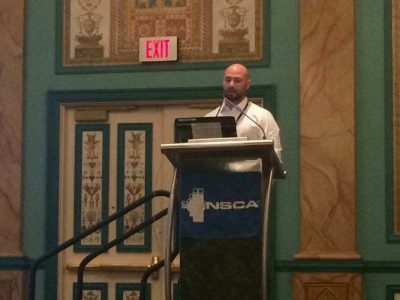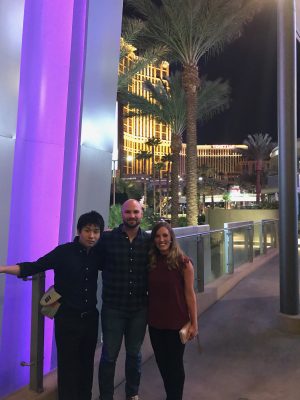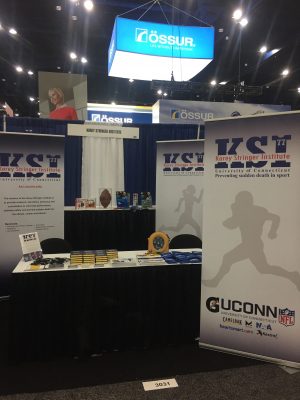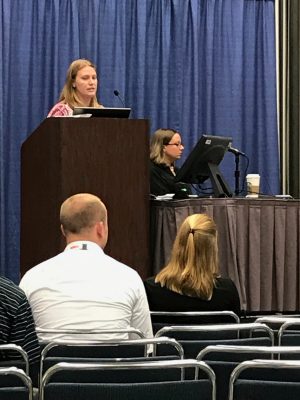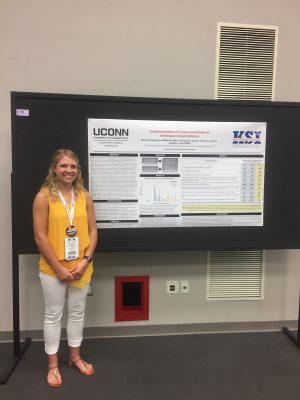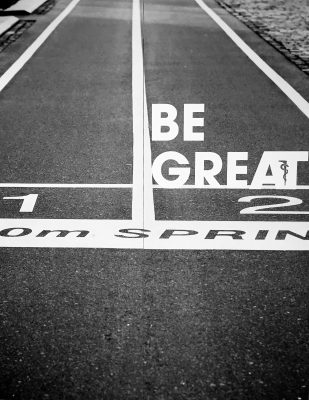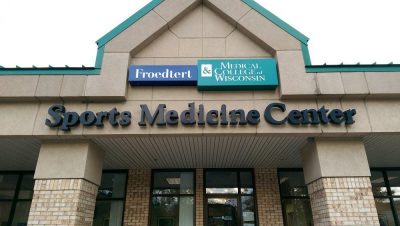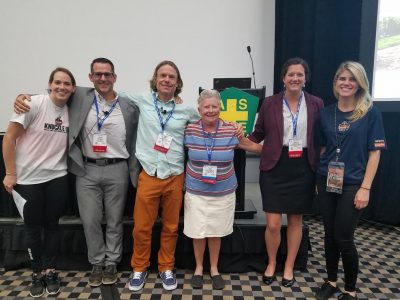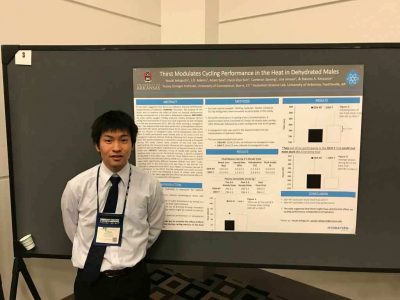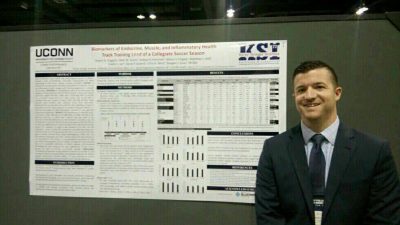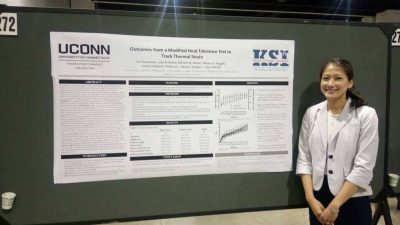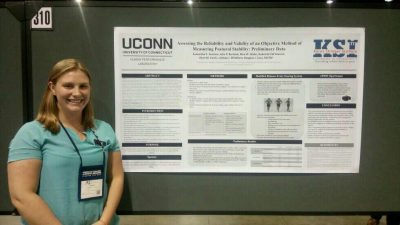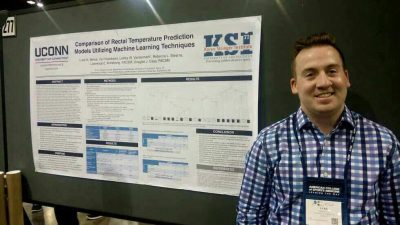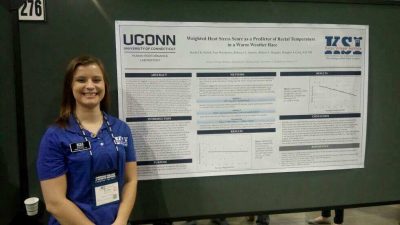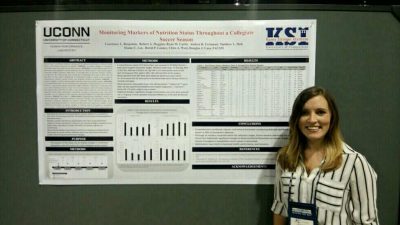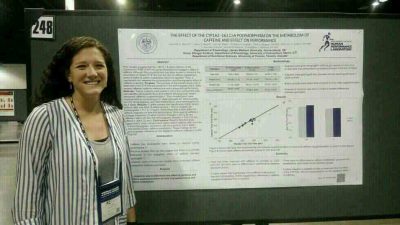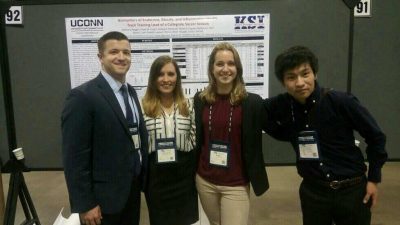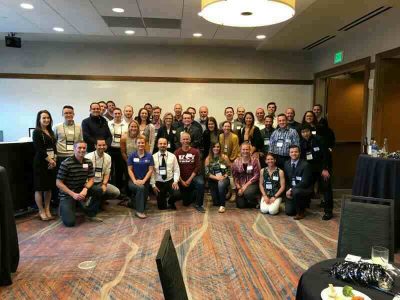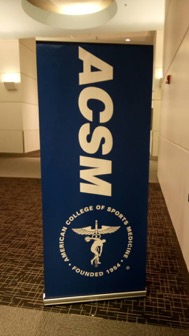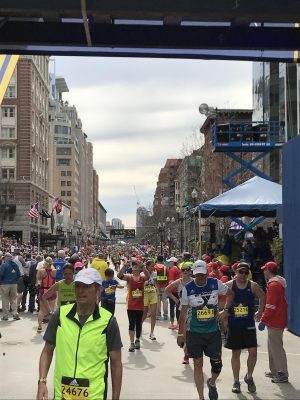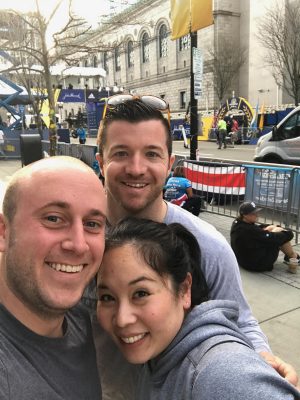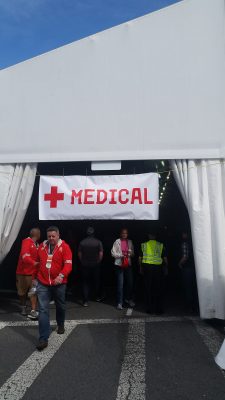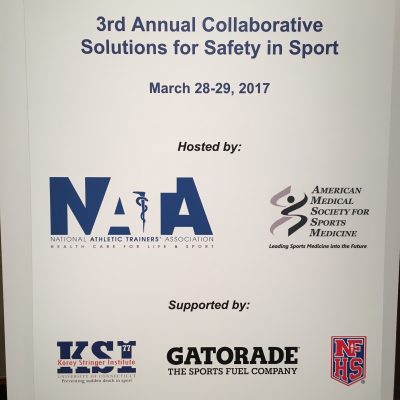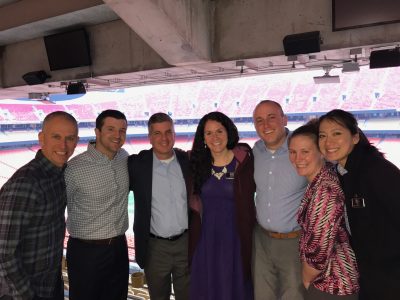Yuri Hosokawa, PhD, ATC
Vice President of Communication and Vice President of Education
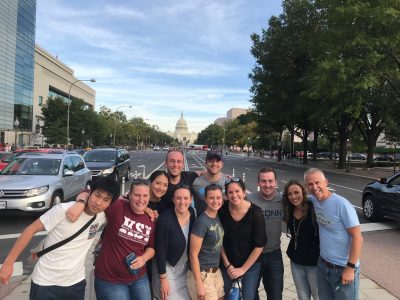
Every October, members of KSI travel to Washington D.C. to volunteer at the Marine Corps Marathon medical tent. This year’s trip was also a special one because we were able to continue our efforts from last year in building relationships and exchange ideas with the National Oceanic and Atmospheric Administration (NOAA), Uniformed Services University of the Health Sciences (USUHS), the Occupational Safety and Health Administration (OSHA), and the National Institute for Occupational Safety and Health (NIOSH).
On Thursday, October 19th, KSI had the honor of gathering representatives from federal sectors that regulate heat activity modification guidelines or study implications of heat in the welfare of warfighters and laborers. The meeting was sponsored by the National Integrated Heat Health Information System (NIHHIS: https://toolkit.climate.gov/nihhis/), whose mission is to understand global health threat from extreme heat, develop a robust and science-informed response, and build capacity and communication networks to improve resilience. Participating agencies of NIHHIS include: Office of the Assistant Secretary for Preparedness and Response (ASP), Centers for Disease Control and Prevention (CDC), United States Environmental Protection Agency (EPA), the Federal Emergency Management Agency (FEMA), NIOSH, NOAA, OSHA, and the Substance Abuse and Mental Health Services Administration (SAMHSA).
KSI has a good history in working collaboratively with the occupational and military sectors, however, it was not until last year that we were able to gather representatives from all three sectors– athletic, occupational, and military– to convene at single location and exchange ideas for future collaborations. Integration of climate and weather data from NOAA is also critical in making data driven decision to enhance the policies and guidelines for the people in these settings who are often exposed to extreme heat. Participants of this year’s meeting are currently working on a manuscript that gathers current consensus regarding heat activity modification guidelines for the physically active population (athletes, warfighters, and laborers), which we hope to release next year.
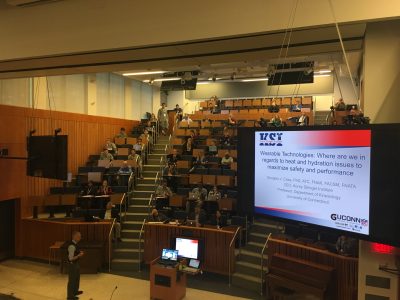
On the following day, we attended the IIRM Sports Medicine Conference hosted by the International Institute for Race Medicine, MedStar Sports Medicine, and MedStar National Rehabilitation Network. The meeting was attended by many medical providers and students who were also volunteering at the Marine Corps Marathon. At the meeting, Dr. Douglas Casa gave a presentation regarding wearable technologies in sport. Despite the recent advancement in wearable technology, his presentation warned that there is yet to be reliable, real-time, noninvasive hydration and internal body temperature assessment devices on the market. As the field of wearable technology continues to grow, researchers and clinicians must stay up-to-date with the technology advancement while also acknowledging the technological limitations to make the best-informed decisions about using data from these devices.
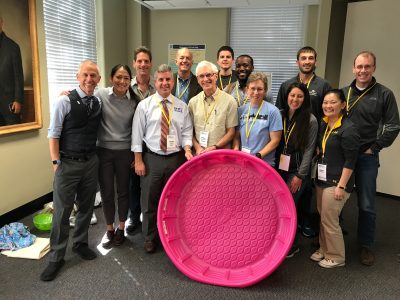
Later in the afternoon of the conference, we also participated in a workshop that was designed to review various treatment algorithms for medical conditions commonly seen at race medical tents in the form of problem-based-learning scenarios. Exercise-associated collapse, cardiovascular arrest, exertional heat stroke, exertional hyponatremia, exercise associated muscle cramping and bleeding-control were covered in the workshop, all lead by the content experts. The hands-on workshop provided opportunities for young professionals to practice the skills for the first time and stimulated the exchange of various experiences from the veteran providers.
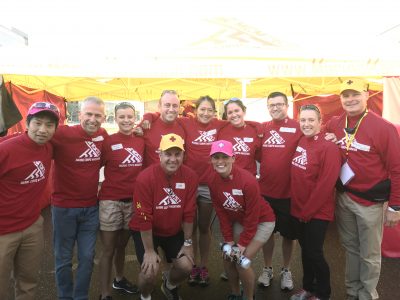
KSI was stationed at the Aid Station 9 on the day of the race, which was located between mile-21 and 22. The wet bulb globe temperature reading one-hour past the start of the race was in the mid-60’s, but quickly reached the high 70’s by noon, placing this year’s race as one of the warmer race in the history of the Marine Corps Marathon. The coordination of work among the corpsmen, athletic trainers, nurses, physical therapists, and physicians at the aid station was great. We also treated several exertional heat stroke patients on-site, where we made sure to cool the patients below 39°C before transport.
Our trip to Washington D.C. is a true demonstration of our mission statement– to provide research, education, advocacy and consultation to maximize performance, optimize safety and prevent sudden death for the athlete, warfighter and laborer. Whether we are treating marathon runners from exertional heat stroke or optimizing the regulations for worker safety in the heat, the physiological premise and impact of exertional heat stress is the “same” across athletes, warfighters, and laborers. Integration of minds across disciplines, such as the NIHHIS meeting, and continued advocacy to provide evidence based exertional heat stroke care are some of the core missions we will continue to carry forward from KSI. #Strive2Protect
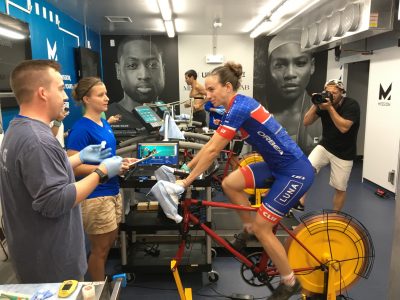
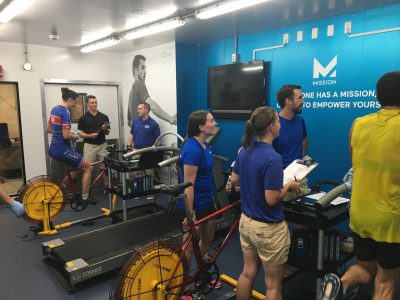 the course of two days! The athletes were Lea Davison, a two-time Olympian Mountain Biker (2012 & 2016), and Gediminas Grinius a decorated Lithuanian trail runner. Some very fit, athletically decorated media personnel underwent testing as well. The athletes were able to undergo heat and sweat testing, where they exercised for 60-minutes total. Because it was a hot environment, the athletes were asked to collect their sweat in a specially prepared towel,and atthe end of their hour, we didwhole-body wash downs to collect samples to assess their sweat electrolyte concentrations. Whole-body wash downs are the gold standard for assessing whole-body sweat electrolyte concentration and very few labs across the country still use this technique. Many have moved over to local collection in sweat pouches, which is a great method of assessing local sweat, but not necessarily valid for whole-body calculations.
the course of two days! The athletes were Lea Davison, a two-time Olympian Mountain Biker (2012 & 2016), and Gediminas Grinius a decorated Lithuanian trail runner. Some very fit, athletically decorated media personnel underwent testing as well. The athletes were able to undergo heat and sweat testing, where they exercised for 60-minutes total. Because it was a hot environment, the athletes were asked to collect their sweat in a specially prepared towel,and atthe end of their hour, we didwhole-body wash downs to collect samples to assess their sweat electrolyte concentrations. Whole-body wash downs are the gold standard for assessing whole-body sweat electrolyte concentration and very few labs across the country still use this technique. Many have moved over to local collection in sweat pouches, which is a great method of assessing local sweat, but not necessarily valid for whole-body calculations.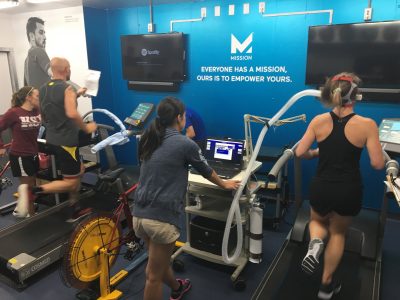
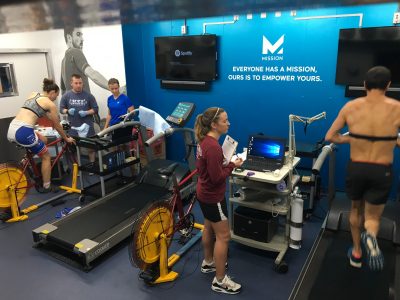
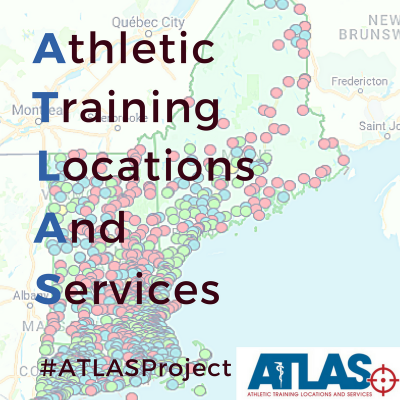
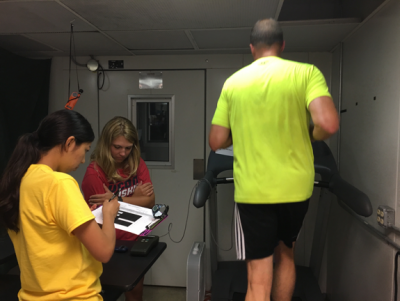
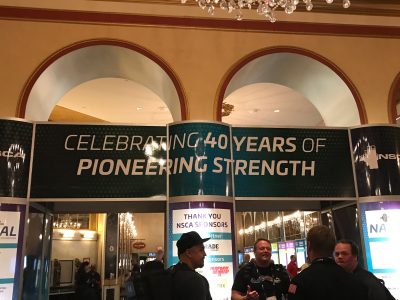
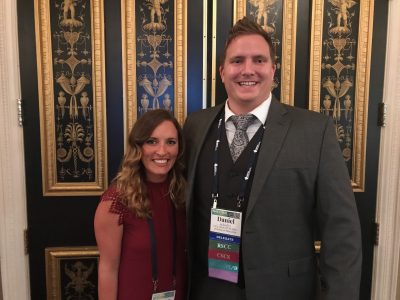
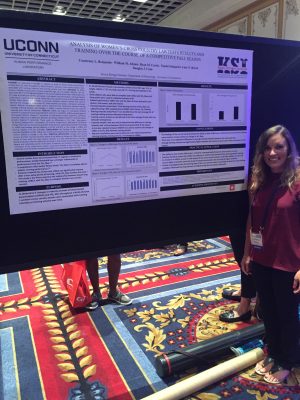 max and training of the UCONN Women’s Cross Country team during their fall season. The major finding of this study was the vOBLA (velocity at onset of blood lactate) was significantly higher during the middle of the season while VO2 max did not change throughout the season. During my presentation, I was very excited to reconnect with two of my former colleagues from Florida State University. Daniel Shaefer was the former director of strength and conditioning at FSU and is now working on is PhD at the University of Wisconsin-Madison. Jon Jost was the former FSU director of strength and conditioning and recently accepted a position with Gatorade. I am hopeful that we will get an opportunity to collaborate on future research. I also had the fortune to meet Kristen Holmes-Winn, from WHOOP, who funded the research Ryan and I presented at this conference.
max and training of the UCONN Women’s Cross Country team during their fall season. The major finding of this study was the vOBLA (velocity at onset of blood lactate) was significantly higher during the middle of the season while VO2 max did not change throughout the season. During my presentation, I was very excited to reconnect with two of my former colleagues from Florida State University. Daniel Shaefer was the former director of strength and conditioning at FSU and is now working on is PhD at the University of Wisconsin-Madison. Jon Jost was the former FSU director of strength and conditioning and recently accepted a position with Gatorade. I am hopeful that we will get an opportunity to collaborate on future research. I also had the fortune to meet Kristen Holmes-Winn, from WHOOP, who funded the research Ryan and I presented at this conference.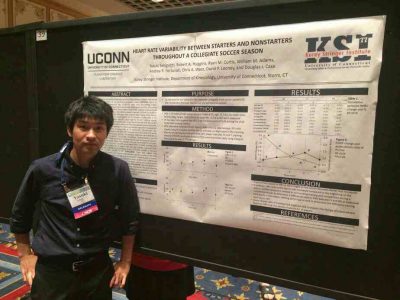 Yasuki Sekiguchi presented a poster titled “Heartrate Variability between Starters and Nonstarters throughout a Collegiate Soccer Season.” During this study, HRV and training load metrics were monitored over the course of D1
Yasuki Sekiguchi presented a poster titled “Heartrate Variability between Starters and Nonstarters throughout a Collegiate Soccer Season.” During this study, HRV and training load metrics were monitored over the course of D1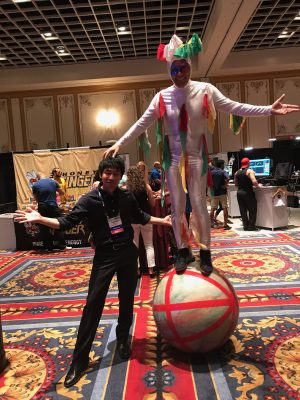 starters. The major finding of this research was that acute:chronic training load ratio might be used to explain the changes in HRV over the course of a Division 1 male soccer team
starters. The major finding of this research was that acute:chronic training load ratio might be used to explain the changes in HRV over the course of a Division 1 male soccer team